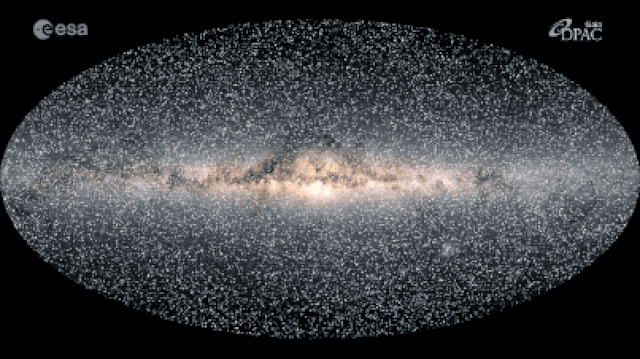The night sky half a million years from now will be completely different from what it is today.
Have you ever seen 40,000 stars twinkling in the night sky at once? If you wish, the European Space Agency (ESA) can offer you two options: either look up into the night sky for about half a million years with the Sun moving steadily over the Milky Way, or watch a piece of it. tape simulates this lapse of half a million years.
This map shows the movement over the next 400,000 years of the closest 40,000 stars in the solar system.
In this new simulation, 40,000 stars lie away from the Sun for 325 light years, leaving long trails of light behind them. Each spot of light represents a real object in the Milky Way, each trace of light indicates the movement of this object in the Milky Way over 400,000 years. What is brighter, faster is closer to our solar system, and weaker and slower more.
At the end of the video, most of the stars are clustered together on the right side of the screen, while the left side is quite sparse. It’s not because the stars are attracted to newly born black holes or because an alien vacuum cleaner is sucked in, it’s just because our Sun is constantly moving, causing the stars to wander. as grouped on the opposite side.
“If you imagine yourself walking past a crowd of people standing still, in front of you, these people seem to be closer to each other as you walk past them,” ESA researchers said. this also happens due to the movement of the Sun with other stars.
This data to create a cosmic image like these fireflies is taken from data collected for the third time officially in December 2020, collected by the Gaia satellite. This new dataset contains detailed information on more than 1.8 billion objects in the universe, including the exact positions, speeds and orbits of more than 330,000 stars 325 light years from Earth. The 40,000 stars represented in this simulation are selected at random.
The Gaia satellite was launched in 2013 with the mission of measuring the positions, distances and movements of stars. A second data release in 2018 helped astronomers map the most detailed universe of all time. This third data release added approximately 100 million new objects to this map.


